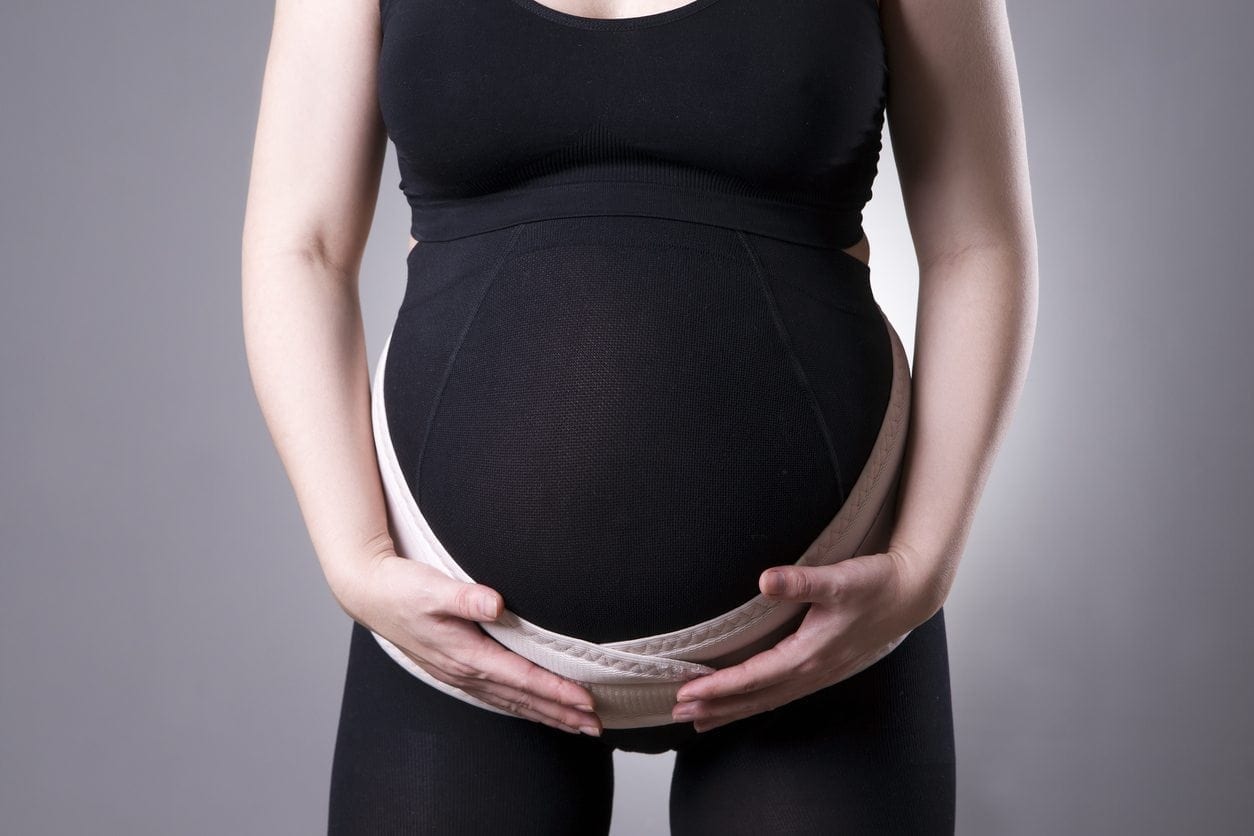There is a lot of pressure on moms to get their pre-baby body back after having a baby these days, and postpartum girdles (or corsets) are one of the more controversial topics in the world of pregnancy and postpartum care. Celebrities like the Kardashians are promoting using corsets after giving birth and praising them as the reason they were able to get back into shape so quickly, but if something seems to good to be true, it often is.
So the recent trend of postpartum girdles (or corset or waist trainers), lots of moms are wondering: are postpartum girdles bad for you?
In fact, they’re not just bad-they’re terrible. I am completely against the idea of using a girdle/corset/waist trainer postpartum, or any time, for that matter. But before we get into why postpartum girdles should be avoided, it’s important that one clarification be made . . .
The Difference Between a Postpartum Belly Wrap and a Postpartum Girdle, Corset, and Waist Trainer
It’s important that new moms do not confuse the two.
Some doctors or midwives may encourage the use of belly wraps for extra support after a c-section. Belly wraps or incision care garments are designed to aid in recovery, to compress the c-section incision, or reduce swelling and decrease pain during the postpartum period.
In the days following delivery, many women may benefit from a slight compression garment designed to help the uterus shrink, speed recovery, and decrease swelling and fluid retention. These are worn short-term and not meant to cause any changes to your body that wouldn’t have happened on their own.
However, postpartum girdles, waist trainers, or corsets are completely different. Instead of being designed to improve recovery, these type of products are designed for extreme binding that is meant to create an exaggerated hourglass figure.
Why Are Postpartum Girdles Bad for You?
All these products do is push your organs, muscles, and bones into a different placement so that you can–for the short amount of time that you’re wearing the girdle–appear to have an hourglass figure.
The problem is that these girdles, corsets, and waist trainers do nothing to help retrain, rebuild, and restore your core. In fact, instead of strengthening your core (which is the true way to get a flat stomach) they actually make your core muscles WEAKER!
Many women are being sold belly flatteners without knowing that these pieces are actually leaving you in worse shape than when you started. Many celebrities are paid thousands of dollars to wear and promote these girdles, corsets, and waist trainers on social media to their followers. But they fail to mention many of the risks associated with such products.
Risks include:
- Compressing your organs
- Compressing your bowels
- Decreasing circulation
- Increasing risks for blood clots
- Weakening core muscles
- Increasing indigestion
- Increasing constipation
- Increasing acid reflux
- Pelvic organ prolapse
Please save your money and don’t buy into this gimmick.
You may like feeling that things are being “held in” when you wear a girdle, but the problem is that you’re doing nothing to strengthen the muscles and are only putting increased pressure on your diaphragm and pelvic floor.
Imagine a balloon being squeezed in the middle. What’s inside of the balloon has to go somewhere. In the case of your stomach, when you’re being squeezed by a girdle, corset, or waist trainer, what’s inside (aka your organs, bowels, etc) has to go somewhere… so it either goes upward, placing pressure on your diaphragm, or it goes downwards, placing pressure on your pelvic floor.
This creates even more intra-abdominal pressure which is the NUMBER ONE THING you want to AVOID if you want to heal your diastasis recti! It also weakens your core and does nothing to engage your abdominal muscles.
Want to know the real way to slim your waist? Proper nutrition and a strong core. That’s it! Your core muscles are your own natural corset.






























